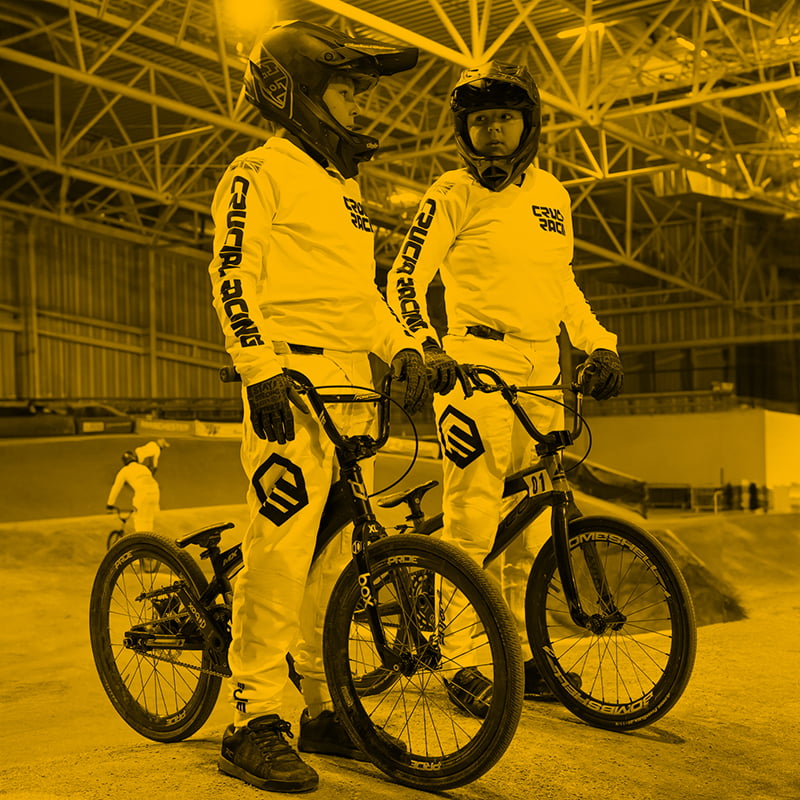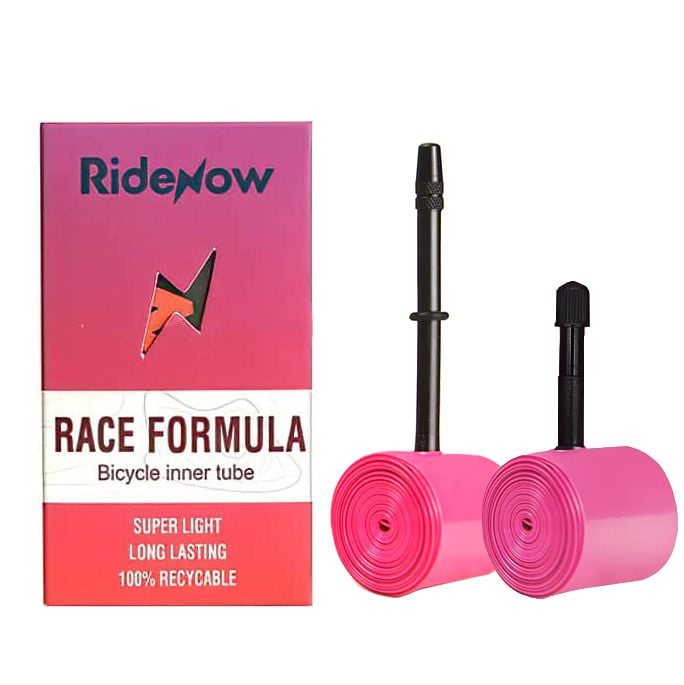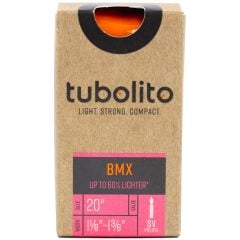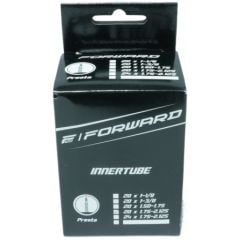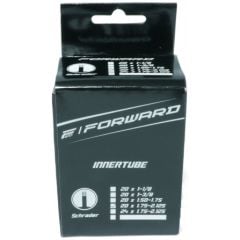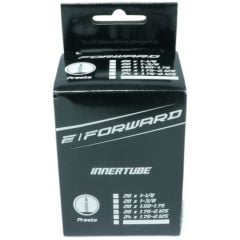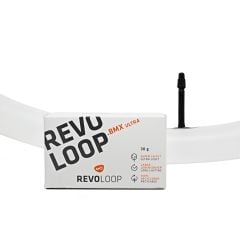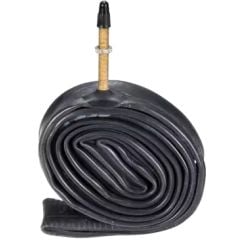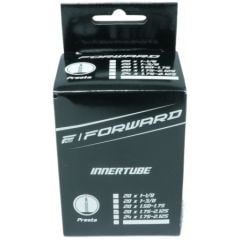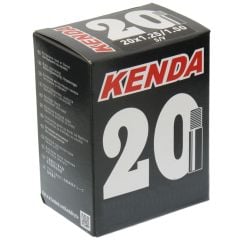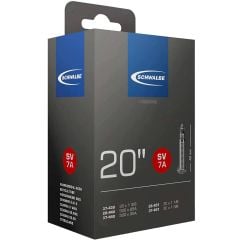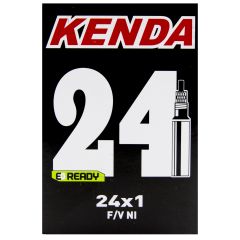RideNow Race Formula Inner Tube
What sets the RideNow tubes apart from other options is their sheer performance. They are 2-5 times lighter than butyl and latex inner tubes. Lighter, stronger, but also faster... Read More
These tubes are a high-performance item, they save an extreme amount of weight, but due to this, they are VERY thin. These must be fitted alongside a thicker, elasticated style rim tape, with perfectly clean tyres/rims. When using these we recommend fitting tyres with your hands, using a tyre lever can cause punctures. Once a tube has been fitted and removed it is not recommended that it be re-used. These tubes are sensitive and we recommend these for high end builds that are maintained meticulously by a skilled mechanic. Punctures of any kind are not covered under warranty.
We are finally in the age where the humble inner tube is being disrupted by innovation and technology. The bike industry has relied on butyl inner tubes for its low cost, relative reliability, and adequate performance since one can remember. However, we are now in the age of TPU inner tubes!
What sets the RideNow tubes apart from other options is their sheer performance. They are 2-5 times lighter than butyl and latex inner tubes.
Lighter, stronger, but also faster!
Click below for RideNow Patch Kit
Features:
- Weight savings - Save up to 200 grams compared to standard inner tubes.
- Lower rolling resistance
- Cost effective upgrade – RideNow inner tubes are the most affordable TPU inner tubes!
- Space saving - Compact size allows you to carry more with less space taken up.
Specification:
20 x 1-1/8 - 1-3/8": (Presta)
- Weight: 27g
- Valve Type: 65mm Presta
- Valve Colour: Clear
- Width: 20” x 1-1/8” - 1-3/8"
20 x 1.5” - 2.1": (Presta)
- Weight: 27g
- Valve Type: 65mm Presta
- Valve Colour: Black
- Width: 20 x 1.5” - 2.1"
20 x 1.5” - 2.1": (Schrader)
- Weight: 35g
- Valve Type: 45mm Schrader
- Valve Colour: Black
- Width: 20 x 1.5” - 2.1"
20 x 1.9” - 2.5": (Schrader)
- Weight: 45g
- Valve Type: 65mm Presta
- Valve Colour: Black
- Width: 20 x 1.9” - 2.5"
24 x 1.5” - 2.2": (Schrader)
- Weight: 35g
- Valve Type: 45mm Schrader
- Valve Colour: Black
- Width: 24 x 1.5” - 2.2"
HOW TO TAKE CARE OF TPU TUBES - INSTALLATION AND MAINTENANCE.
As a prerequisite, you must rim tape with your wheel prior to installing TPU inner tubes. TPU tubes installed directly on the rim surface is more prone to contact with debris and heat imbalances which can damage the tube and cause irreversible damage. Installation without rim tape will immediately invalidate any warranty claims. For tubeless ready rims, tubeless rim tape can also perform even better than traditional rim tape.
- Prior to installing the RideNow inner tube, carefully inspect the inner wall of the outer tire, rim, spoke ends, and rim tape for any sharp objects that could cause punctures or tire bursts.
- Even when using tubeless wheel sets, it is essential to use the appropriate size of rim tape and ensure correct installation.
- Before inflating the RideNow tube, turn the valve inward (towards the center of the tire circle). Inflate it slightly until the inner tube takes on a rounded shape, with a pressure not exceeding 0.5 bar/8 PSI. Make sure to slightly inflate the inner tube before proceeding with the following installation steps.
- When installing the outer tire, ensure that one side of the tire extends beyond the outer rim edge, then insert the inner tube into the outer tire. Confirm that the inner tube is free from twisting or being pinched between the rim and the outer tire. Also, verify that the nozzle valve aligns with the rim nozzle hole and remains vertically positioned.
- Avoid using sharp or pointed tools during inner tube installation, as these may damage either the inner tube or the outer tire, potentially leading to air leaks after use or inflation. Begin by pulling the protruding side of the outer tire near the air nozzle over the rim flange until the entire outer tire securely attaches to the rim. Ensure there is no compression of the inner tube, and that it remains crease-free.
- Roll the partially inflated tire on the ground to release any potential folds caused by squeezing. Gradually inflate the tire, ensuring that both sides of the outer tire evenly adhere to the rim during inflation. Take care not to exceed the maximum allowable pressure of the rim, rim tape, and outer tire. It is important to check the tire pressure before every ride. In case of an inner tube leak or a repairable puncture, you can use the RideNow tire repair kit, complete with usage instructions. Do not attempt to repair the RideNow inner tube with any other tire repair products, as they may not adhere properly and may not prevent air from escaping through the puncture.
When inflating a TPU inner tube outside the tire, it is imperative to inflate no more than 0,5bar/8psi. Beyond that, it may lead to blistering, blistering of the tube which will render it unusable.
If you can take care and pay attention to the above, you will minimise the chances of malfunction and enjoy your TPU inner tube for a comparable period to standard butyl tubes.
There are currently no reviews for this product.
New Rider?
